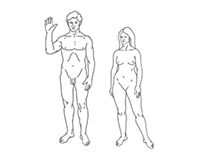Participatory culture is a neologism in reference of, but opposite to a Consumer culture — in other words a culture in which private persons (the public) do not act as consumers only, but also as contributors or producers (‘prosumers’). The term is most often applied to the production or creation of some type of published media.
This new culture as it relates to the Internet has been described as ‘Web 2.0.’ In participatory culture ‘young people creatively respond to a plethora of electronic signals and cultural commodities in ways that surprise their makers, finding meanings and identities never meant to be there and defying simple nostrums that bewail the manipulation or passivity of ‘consumers.”
The increasing access to the Internet has come to play an integral part in the expansion of participatory culture because it enables people to work collaboratively; generate and disseminate news, ideas, and creative works; and connect with people who share similar goals and interests (affinity groups). The potential of participatory culture for civic engagement and creative expression has been investigated by media scholar Henry Jenkins. In 2006, Jenkins co-authored a white paper, ‘Confronting the Challenges of Participatory Culture: Media Education for the 21st Century,’ which describes a participatory culture as having: relatively low barriers to artistic expression and civic engagement; strong support for creating and sharing one’s creations with others; some type of informal mentorship whereby what is known by the most experienced is passed along to novices; members who believe that their contributions matter; and members who feel some degree of social connection with one another.
The emergence of the Amateur Press Association in the middle of the 19th century is an example of historical participatory culture; at that time, young people were hand typing and printing their own publications. These publications were mailed throughout a network of people and resemble what are now called social networks. The evolution from zines, radio shows, group projects, and gossips to blogs, podcasts, wikis, and social networks has impacted society greatly. The implications of the gradual shift from production to produsage are profound, and will affect the very core of culture, economy, society, and democracy.
As technology continues to enable new avenues for communication, collaboration, and circulation of ideas, it has also given rise to new opportunities for consumers to create their own content. Barriers like time and money are beginning to become less significant to large groups of consumers. For example, the creation of movies once required large amounts of expensive equipment, but now movie clips can be made with equipment that is affordable to a growing number of people. The ease with which consumers create new material has also grown. Extensive knowledge of computer programming is no longer necessary to create content on the internet. Media sharing over the Internet acts as a platform to invite users to participate and create communities that share similar interests through duplicated sources, original content, and repurposed material.
As the mindsets and skillsets of participatory practices have been increasingly taken up, people exploit these tools in 2.0 ways. One example is the use of cellphone technology to engage ‘smart mobs’ for political change worldwide. In countries where cellphone usage exceeds use of any other form of digital technology, passing information via mobile phone has helped bring about significant political and social change. Notable examples include the so-called ‘Orange Revolution’ in Ukraine, the overthrow of Philippine President Joseph Estrada, and regular political protests worldwide.
The smartphone combines elements of interactivity, identity, and mobility. The mobility of the smartphone demonstrates that media is no longer bound by time and space can be used in any context. Technology continues to progress in this direction as it becomes more user driven and less restricted to schedules and locations, for example the progression of movies from theaters to private home viewing, to now the smartphone that can be watched anytime and anywhere. The smartphone also enhances the participatory culture by increased levels of interactivity. Instead of merely watching, users are actively involved in making decisions, navigating pages, contributing their own content and choosing what links to follow.
Participatory culture has been hailed by some as a way to reform communication and enhance the quality of media. According to media scholar Henry Jenkins, one result of the emergence of participatory cultures is an increase in the number of media resources available, giving rise to increased competition between media outlets. Producers of media are forced to pay more attention to the needs of consumers who can turn to other sources for information. Howard Rheingold and others have argued that the emergence of participatory cultures will enable deep social change. Until as recently as the end of the 20th century, Rheingold argues, a handful of generally privileged, generally wealthy people controlled nearly all forms of mass communication—newspapers, television, magazines, books and encyclopedias. Today, however, tools for media production and dissemination are readily available and allow for what Rheingold labels ‘participatory media.’
What a person can accomplish with an outdated machine in a public library with mandatory filtering software and no opportunity for storage or transmission pales in comparison to what a person can accomplish with a home computer with unfettered Internet access, high bandwidth, and continuous connectivity. The school system’s inability to close this participation gap has negative consequences for everyone involved. On the one hand, those youth who are most advanced in media literacy are often stripped of their technologies and robbed of their best techniques for learning in an effort to ensure a uniform experience for all in the classroom. On the other hand, many youth who have had no exposure to these new kinds of participatory cultures outside school find themselves struggling to keep up with their peers.
The Daily Omnivore
Everything is Interesting



Leave a comment